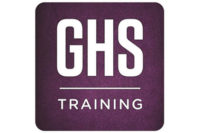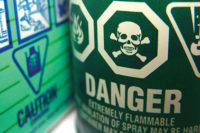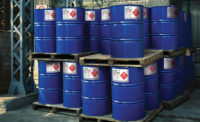In companies all across the United States, hard-working employees have jobs that expose them to the dangers of hazardous chemicals in the workplace. The Hazard Communication Standard—nicknamed HazCom — was created by OSHA to protect and inform employees of potential workplace hazards.
Adopted as OSHA HazCom 2012 in March 2012, this updated standard aligns with the Globally Harmonized System of Classification & Labeling – introducing an internationally accepted set of label warnings and a standardized 16-section SDS format. The adoption of GHS brought great advancements toward safer workplaces and the reduction of international trade barriers. By the June 2016 deadline, five million workplaces (representing 40 million workers) were expected to meet GHS standards. But many organizations were confronted with challenges that have kept them from achieving safe and compliant workplaces.
So if your company is still working toward GHS compliance, you are not alone. But you are at risk. Because HazCom noncompliance incurred the second most frequently cited OSHA violation in 2015 (bested by fall protection) and OSHA recently increased its penalties by 78 percent (effective August 1, 2016), the fear of incurring penalties for noncompliance is valid in any industry. But it doesn’t have to be.
Understanding the following challenges and solutions can help drive your company toward compliance.
Challenges to GHS transition
- Completing an accurate inventory. Without evaluation of trained specialists, sites often lack 20 percent to 50 percent of the safety data sheets (SDSs) they need to represent everything on site.
- Obtaining updated SDSs from source manufacturers. With the new 16-section SDSs the burden is on manufacturers to revise all material SDSs.
- Educating and training employees. Under HazCom, employees have a right to understand potential hazards in the workplace. Companies are required to educate and train employees on potential hazards.
- Re-classification of hazardous materials. New inverted label rating and classification systems can cause confusion when evaluating chemicals.
- Printing GHS-compliant labels. GHS labels now have ten standard pictograms and new requirements for labels.
- Authoring new SDS documents. To meet client needs and align with the GHS 16-section format, collaborative efforts between manufacturers and authoring teams is necessary to provide accurate, compliant SDS documents.
Creating a game plan for transition
Search every cabinet, corner, container and closet. Take a full inventory of every material on site. Engage inventory specialists to verify and evaluate a list of any and all required SDSs.
Acquire new SDSs. According to the GHS Readiness survey, obtaining new SDS was the primary challenge to compliance. Proactive communication with manufacturers and engaging third party acquisition services help drive SDS obtainment.
Launch educational programs. Many software solutions include training opportunities and “train the trainer” programs that empower employees to implement robust training programs to drive education according to HazCom standards.
If your company is among the millions of workplaces still moving toward GHS compliance, these guidelines can help your organization make a smooth transition to reduce risk and provide the most effective safe and secure environment for your organization, giving your employees the right to know—and understand—any hazardous materials or practices in your workplace.



